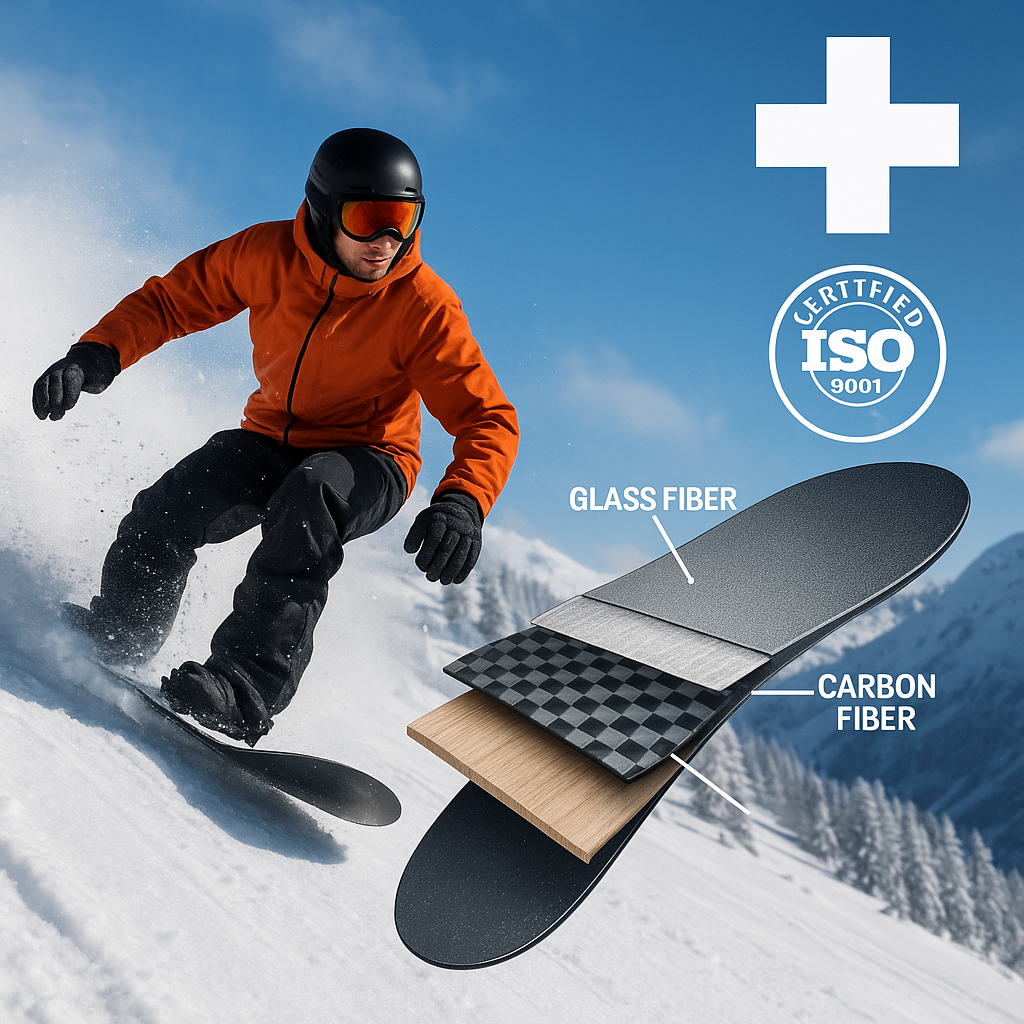Why Composite Materials Are Revolutionizing Winter Sports Equipment

Introduction
Composite materials—lightweight polymers reinforced with carbon or glass fiber—have transformed how we design and ride snowboards, monoskis and kite-surf boards. At LSComposites, we leverage Swiss ISO 9001 processes to push the limits of strength, flexibility and performance on every run.
1. What Makes Composites Superior?
- Strength-to-Weight Ratio
Unlike aluminum or wood cores, fiber-reinforced composites deliver the rigidity you need for carving while keeping boards feather-light. - Fatigue Resistance
High-quality resin systems absorb repetitive loading, preventing delamination and extending service life. - Vibration Damping
Composite layups naturally isolate vibration, so you enjoy a smoother ride on choppy slopes.
2. Performance Benefits on the Snow
- Precision Carving
Tailored flex patterns let you transition edge-to-edge with surgical accuracy. - Pop & Energy Return
Our proprietary fiber orientation stores and releases energy on ollies and jumps, giving riders extra pop. - All-Terrain Adaptability
From powder to park, composite cores dynamically flex under load, adapting to varied snow conditions.
3. The Swiss Standard Edge
- ISO 9001 Quality Control
Every batch undergoes rigorous testing—tensile strength, peel, and cold impact—to meet our Swiss-driven benchmarks. - Traceability
Resin and fiber batches are fully traceable back to suppliers, ensuring consistency across production runs.
4. LSComposites’ R&D Pipeline
- Nanocarbon Enhancements
Early trials with graphene-infused laminates show 15% weight savings without sacrificing toughness. - Eco-Resins
We’re piloting bio-based resins that cut CO₂ footprint by up to 30%—all while maintaining performance.
Conclusion
As demand for lighter, stronger, more responsive boards grows, composite technology stands at the forefront. LSComposites combines Swiss precision with Tunisian manufacturing to deliver world-class winter sports equipment—ride the future today.





